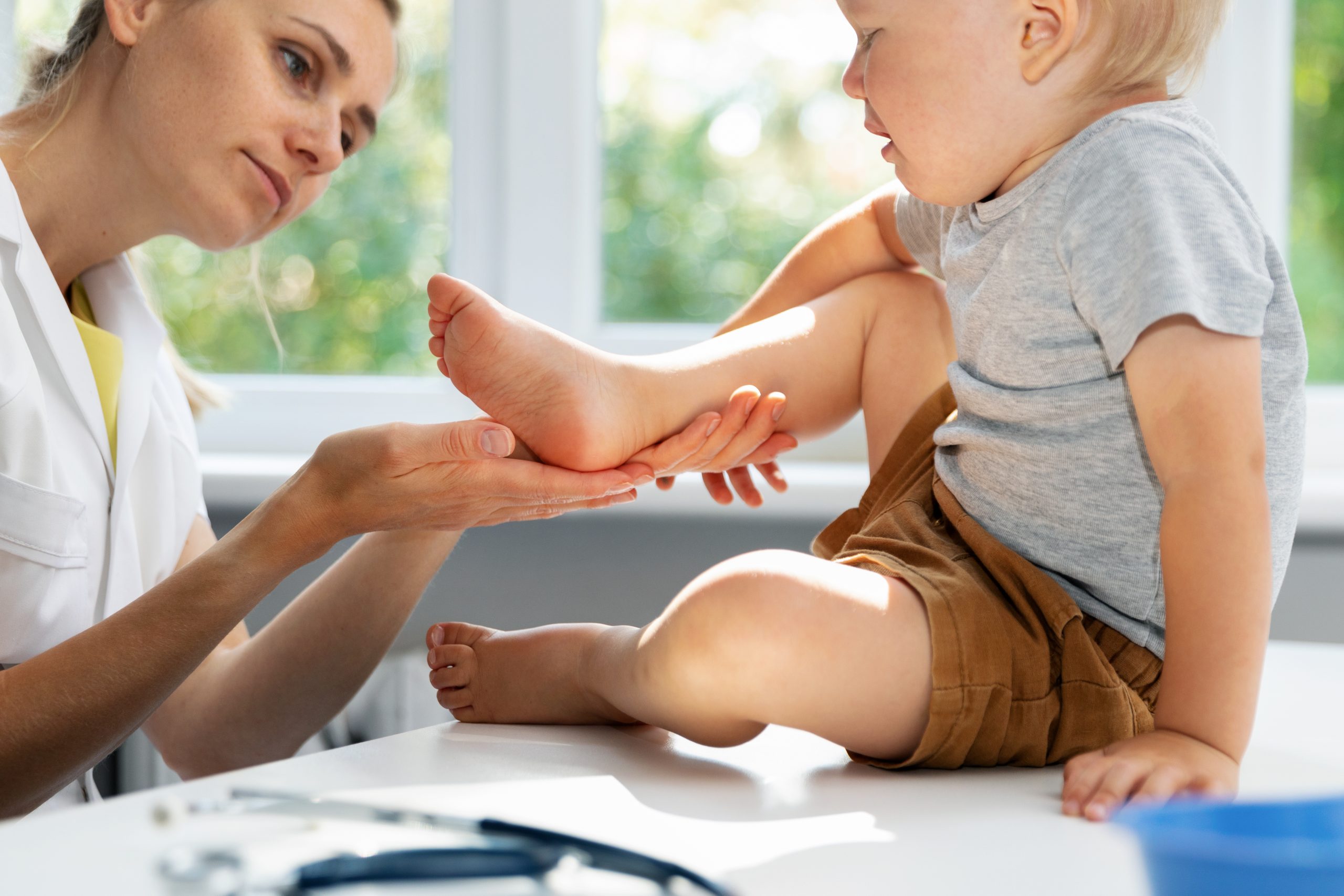When a family grows, one of the priorities for young parents is scheduling medical appointments for developmental checks on the newborn. However, arranging a podiatric consultation for the child is a rarer occurrence, even though walking is an important step in a baby’s growth, and their little feet require just as much care as the rest of their body. What can you do to avoid injuries and provide your child’s feet with the support they require?
Common problems in children
You may find your baby’s wobbly walk adorable when they take their first steps. However, you should check to see whether your child’s feet are hurting, and the best way to do so is to arrange a podiatrist visit.
By default, a baby’s chubby little feet are flat. This is a natural phenomenon as long as they are not walking. His or her little muscles grow and the arch of the foot begins to form only when he or she begins to explore the world while standing. This should only be a reason for concern if it is painful for your child and interferes with their motor abilities.
It is normal for toddlers who are just learning to stand to have weird postures. Children frequently walk or run on their toes, or with their feet pointing inward. The inexperience of the child’s foot also affects their legs, allowing them to assume positions that many adults would find uncomfortable. However, while your child may be able to sit comfortably with their legs bent on either side of their pelvis, or lie on their stomach, these postures are not good for the feet or joints in the long run.
Whether there is a problem or not, your child’s feet should be examined by a podiatrist
Although the majority of patients in podiatry are adults, some issues can be avoided with early childhood podiatric care.
There are several signs that your child’s feet require attention. The first is hearing recurrent complaints of discomfort, particularly after physical exertion.
The second question is whether their feet are turned in or out. For how long has your child been walking on their toes? Is he or she easily exhausted after a walk?
Finally, because it is widely assumed that children are flexible, correcting improper posture may be less rigorous than required. Consider proposing other positions, such as sitting with a straight back and legs outstretched, to prevent damaging knee and ankle joints.
While it is feasible to discover a potential problem by monitoring your kid, it is impossible to rule out the chance of a non-visible condition. The easiest approach to avoid this is to have your child see a podiatrist so that the podiatrist can understand these behaviours.
When should I start taking my child to a podiatrist?
If you believe your baby’s foot growth needs to be evaluated, you can take him or her to the podiatrist as early as one month of age. However, the foot is only adequately grown and stabilized between the ages of 2 and 3, for a solid overall view of its status. Starting a routine at this age will help in identifying the source of the issue. Wearing orthotics, adapted shoes, or performing particular exercises are all moderate ways to reduce your child’s discomfort and support normal foot growth.
A consultation is the best way to ensure that your child walks well
The podiatrist will undertake a biomechanical evaluation of your child’s feet, walking, and legs during their podiatric appointment. By examining posture and motion, this method might detect any musculoskeletal problems. This appointment is an opportunity to ensure that your child’s feet are developing normally, as well as to rule out any pathology. If there is, the sooner in the child’s life it is addressed and rectified, the better.
Working with a podiatrist to ensure your child’s foot development
If you identify any of the aforementioned characteristics in your child, you should make an appointment with a podiatrist. The FootNetwork clinics’ health specialists will be able to put your infant at ease and monitor his or her foot’s growth to guarantee maximum comfort throughout everyday activities.

